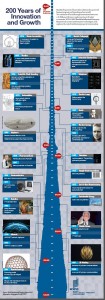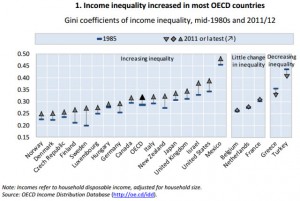The annual Bristol Festival of Economics is under way and seems to be contining to build in popularity. As ever, there is a terrific roster of books by the participants. Adair Turner kicked things off with a discussion of his new book [amazon_link id=”0691169640″ target=”_blank” ]Between Debt and the Devil: Money, Credit and Fixing Global Finance[/amazon_link].
[amazon_image id=”0691169640″ link=”true” target=”_blank” size=”medium” ]Between Debt and the Devil: Money, Credit, and Fixing Global Finance[/amazon_image]
Also featured are:
Robert Shiller, [amazon_link id=”0691168318″ target=”_blank” ]Phishing for Phools[/amazon_link] (co-authored with George Akerlof)
[amazon_image id=”0691168318″ link=”true” target=”_blank” size=”medium” ]Phishing for Phools: The Economics of Manipulation and Deception[/amazon_image]
Vince Cable, [amazon_link id=”1782394494″ target=”_blank” ]After the Storm[/amazon_link]
[amazon_image id=”1782394494″ link=”true” target=”_blank” size=”medium” ]After the Storm[/amazon_image]
Joris Luydendijk, [amazon_link id=”1783350644″ target=”_blank” ]Swimming with Sharks: My journey into the world of bankers[/amazon_link]
[amazon_image id=”B010KNF704″ link=”true” target=”_blank” size=”medium” ]Swimming With Sharks: My Journey into the World of the Bankers[/amazon_image]
Cameron Hepburn, [amazon_link id=”0199676887″ target=”_blank” ]Nature in the Balance[/amazon_link] (with Dieter Helm) and [amazon_link id=”B005LNKHP4″ target=”_blank” ]The Economics and Politics of Climate Change[/amazon_link].
[amazon_image id=”0199676887″ link=”true” target=”_blank” size=”medium” ]Nature in the Balance: The Economics of Biodiversity[/amazon_image] [amazon_image id=”B005LNKHP4″ link=”true” target=”_blank” size=”medium” ]The Economics and Politics of Climate Change[/amazon_image]
Martin Sandbu, [amazon_link id=”B00WAM14PQ” target=”_blank” ]Europe’s Orphan: The future of the Euro[/amazon_link]
[amazon_image id=”B00WAM14PQ” link=”true” target=”_blank” size=”medium” ]Europe’s Orphan: The Future of the Euro and the Politics of Debt[/amazon_image]
Katrine Marcal, [amazon_link id=”B00XWVGN0K” target=”_blank” ]Who Cooked Adam Smith’s Dinner?[/amazon_link]
[amazon_image id=”B011T7OXXW” link=”true” target=”_blank” size=”medium” ]Who Cooked Adam Smith’s Dinner?: A Story About Women and Economics by Katrine Marcal (5-Mar-2015) Paperback[/amazon_image]
Martin Ruhs, [amazon_link id=”B00LLP19BM” target=”_blank” ]The Price of Rights: regulating international labour migration[/amazon_link]
[amazon_image id=”B00LLP19BM” link=”true” target=”_blank” size=”medium” ]The Price of Rights: Regulating International Labor Migration by Ruhs, Martin (2013) Hardcover[/amazon_image]
Francois Bourguignon, [amazon_link id=”069116052X” target=”_blank” ]The Globalization of Inequality[/amazon_link]
[amazon_image id=”069116052X” link=”true” target=”_blank” size=”medium” ]The Globalization of Inequality[/amazon_image]
Emran Mian, [amazon_link id=”0099572222″ target=”_blank” ]The Banker’s Daughter[/amazon_link]
[amazon_image id=”0099572222″ link=”true” target=”_blank” size=”medium” ]The Banker’s Daughter[/amazon_image]
Julian LeGrand and Sarah Smith, [amazon_link id=”0230553001″ target=”_blank” ]The Economics of Social Problems[/amazon_link] (with Carol Propper)
[amazon_image id=”0230553001″ link=”true” target=”_blank” size=”medium” ]The Economics of Social Problems[/amazon_image]
Alex Bowen, [amazon_link id=”9814551848″ target=”_blank” ]The Global Development of Regimes to Combat Climate Change[/amazon_link]
[amazon_image id=”B00KWZIRI0″ link=”true” target=”_blank” size=”medium” ]The Global Development of Policy Regimes to Combat Climate Change: 4 (The Tricontinental Series on Global Economic Issues)[/amazon_image]
and my own – newly out in paperback
Diane Coyle, [amazon_link id=”0691169853″ target=”_blank” ]GDP: A brief but affectionate history[/amazon_link]
[amazon_image id=”0691169853″ link=”true” target=”_blank” size=”medium” ]GDP: A Brief but Affectionate History[/amazon_image]
|
ShodanAlexM
Adair Turner opening Bristol Festival of Economics 2015, talking debt, housing & economic recovery. #economicsfest https://t.co/461vvsUSXB
11/11/2015 18:54 |


